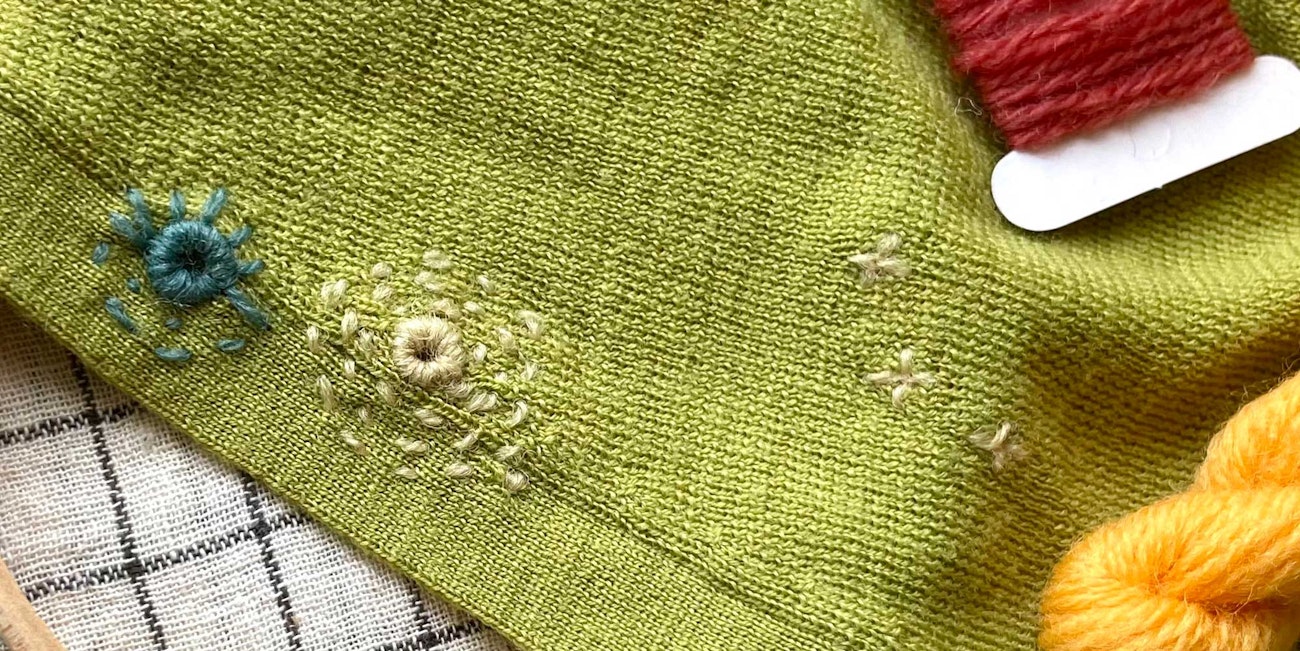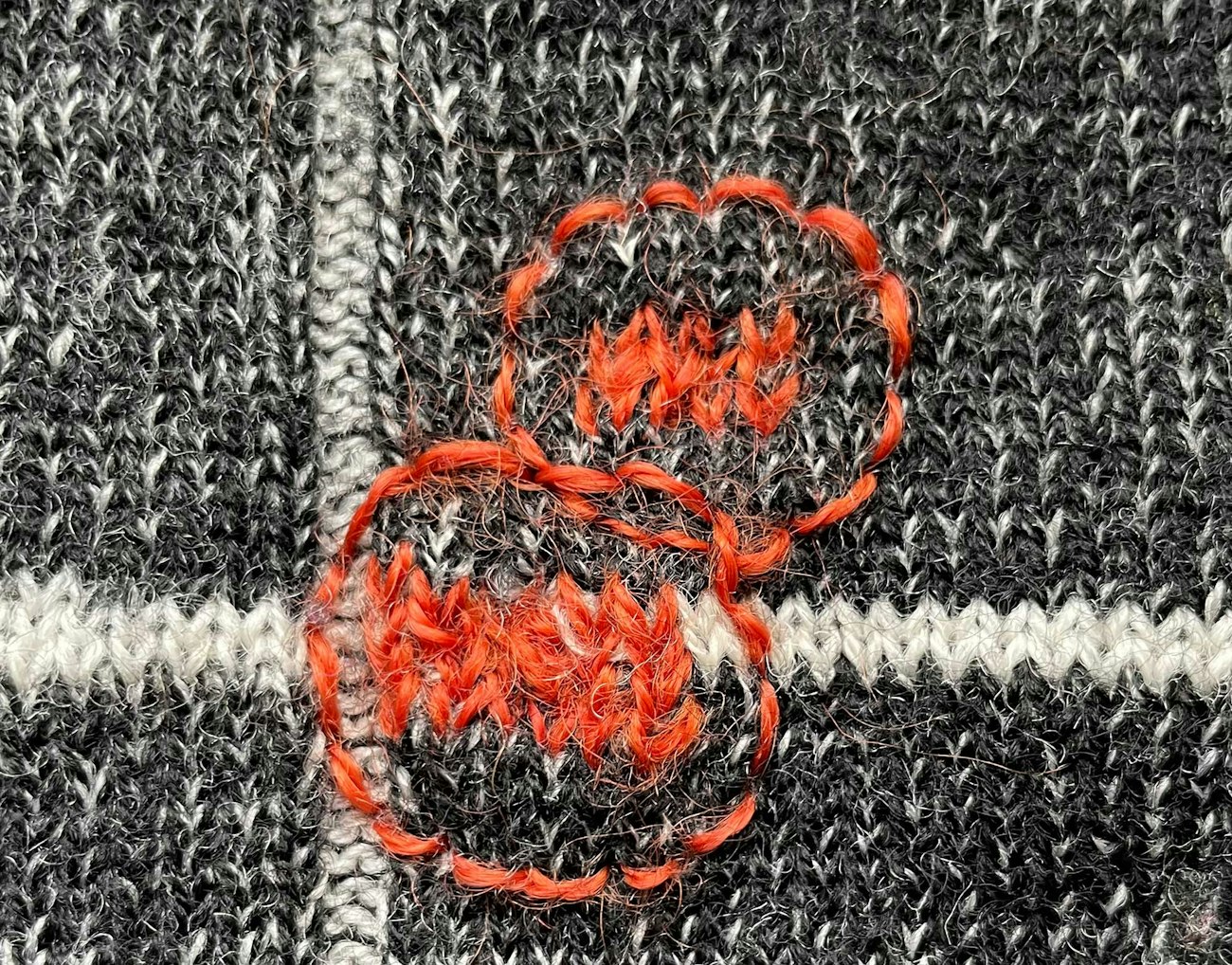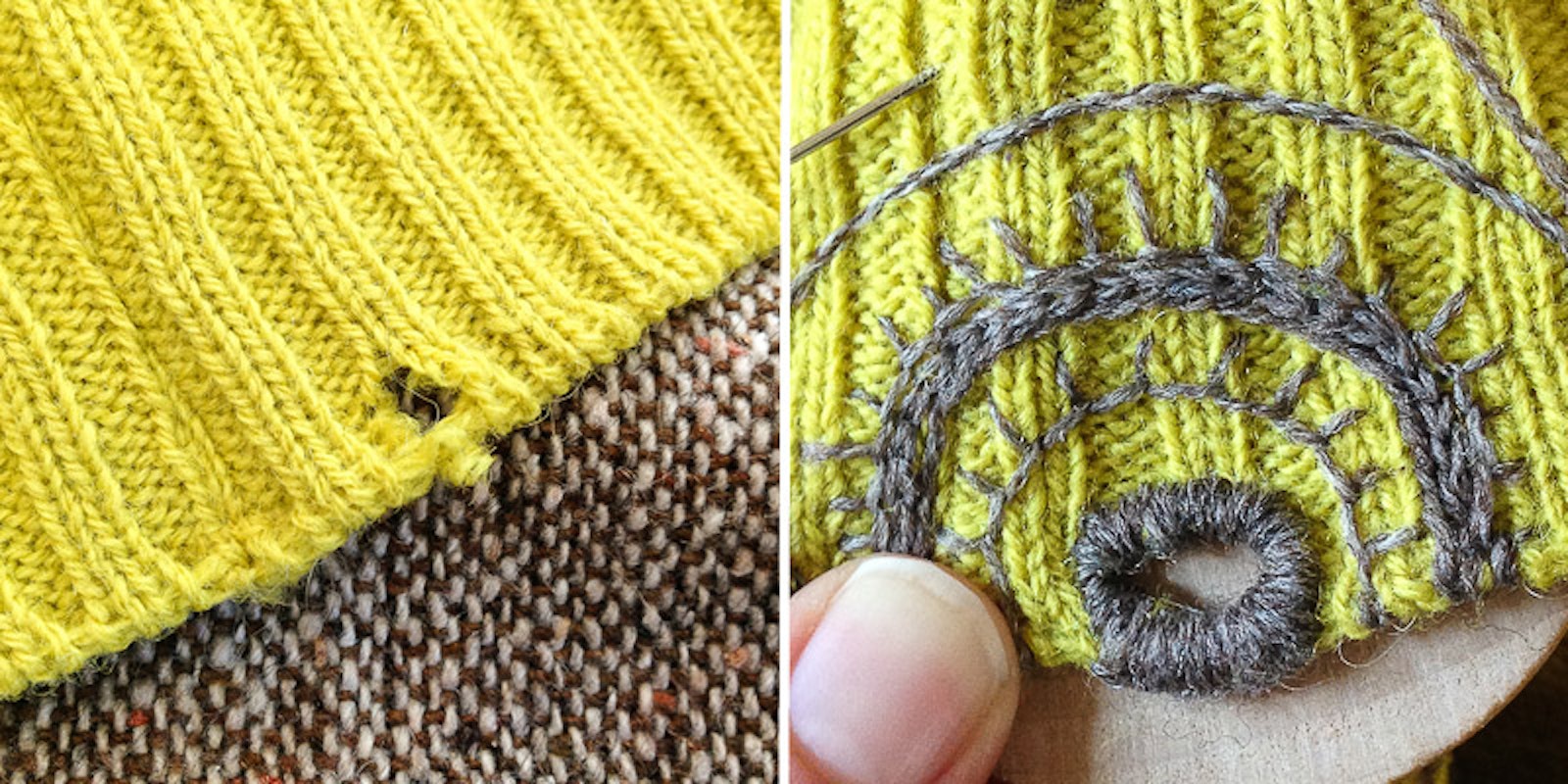I often hear people say that they spend the beginning of the new year doing what they hope to do the rest of the year, so I’ve turned with enthusiasm to my mending pile. Will you join me? Socks, scarves, jeans, sweaters . . . There is always work to be done.
 Repairing, mending, strengthening
Repairing, mending, strengthening
Mending can allow you to cover a weak or broken place in your favorite fabrics or, alternatively, to embellish and cherish them. I love following the Visible Mending movement and Tom of Holland’s work in helping us to see the beauty in mending.
When spinning for mending threads, I use a wide variety of fibers. The green sweater above is mended with a very bouncy 2-ply Corriedale in a beautiful natural grey. When using a stretchy yarn, I always use a darning egg, mushroom, or disk so the work doesn’t get too tight. The red thread below (which you might have noticed from my John C. Campbell Folk School post) is 2-ply Border Leicester dyed in madder.
 Wear your mends proudly!
Wear your mends proudly!
3 things to remember when spinning for repairs:
1. Choose fibers thoughtfully.
I always consider how I will use and launder the fabric. Repairing your favorite, cotton jeans with cotton mending threads is a safe route if you intend to throw them into the washer and dryer. I often use a variety of fibers to mend wool sweaters that will be hand-washed. Feel free to reach for those beautiful handspun silk leftovers or a bit of cottolin loom waste!
2. Don’t over-do it.
Over-doing it can be tempting, especially on knitted fabrics. As I mend my knits, I frequently check the elasticity of the fabric to make sure a mend hasn’t made that area too rigid.
3. Find beauty in the broken places.
I adore the look of visible mends. Often, if I have just a small hole or snag to fix, I will start in the center, opening or embellishing the hole, and then work outwards. I often think the extra stitches surrounding the repair help it to look intentional and blend into the garment. These surrounding stitches also work to stabilize weakened fabric if needed.
Kate Larson, editor of Spin Off, teaches handspinning around the country and spends as many hours as life allows in the barn with her beloved flock of Border Leicesters.
Originally posted October 23, 2018. Updated January 24, 2019.

